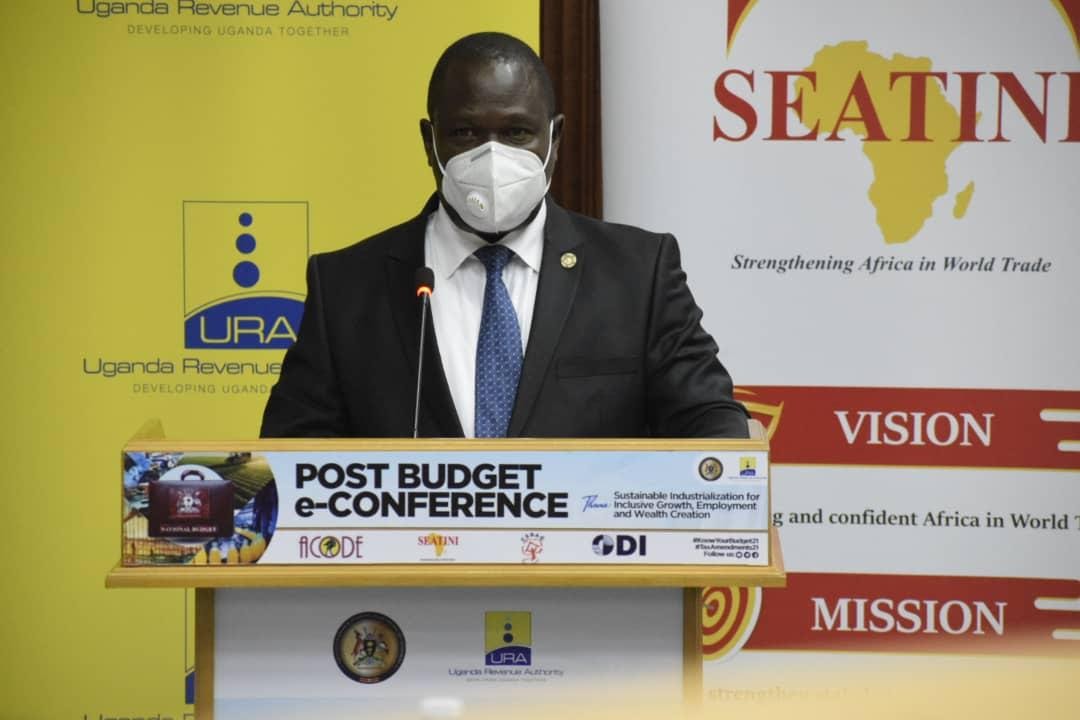UGANDA, Kampala | Real Muloodi News | Uganda Revenue Authority (URA) has already met 93% of its tax collection target of USh 18 trillion, tells John Musinguzi Rujoki, Commissioner-General of the URA.
Mr Musinguzi claimed that URA would reach its FY2020/2021 target of USh 18 trillion by the end of the financial year 2020/21. The financial year ends in 4 days – 30th June 2021.
URA, in collaboration with the Ministry of Finance Planning and Economic Development, organized a post-budget e-conference. The theme was: “Sustainable Industrialization for Inclusive Growth, Employment and Wealth Creation.”
During this conference, it was announced that the target for the financial year 2021/22 is USh 44.7 trillion. USh 22.42 trillion of the total revenue target will be locally collected. Of this, USh 20.8 trillion will be tax revenue, and USh 1.5 trillion non-tax revenue.
Elaborating on this, Mr Musinguzi explained this is an increase of 0.7% of the current GDP. The catalyst for the increase is an enhancement in economic activity and efficient tax collection by URA.
“The outcome objective of URA is to raise enough revenue to fund government expenditure and eliminate donor dependence. We shall strengthen timely revenue reconciliation and reporting,” he said.
Adding: “We shall strive to put our scarce resources to optimal use by ensuring financial prudence at all times, so as to derive maximum outputs. Our desire is to raise at least 1% of GDP from domestic resources on an annual basis. We call upon all Ugandans to join us on this journey to economic independency.”
Other key areas that the URA is improving:
- Repositioning of its mission, vision and core values. Through this, URA seeks to rebuild its credibility, improve compliance levels and enhance the service offering.
- Alignment with government frameworks such as the Third National Development Plan (NDP111) and the Domestic Revenue Mobilization Strategy (DRMS), URA has introduced measures that will be implemented in the short and medium term.
- Improvement in business process to provide clients with less compliance costs, improved service delivery and ensure consistency.
- Enhanced data analysis to ensure taxpayer compliance and implementation of IT solutions like Digital Tax Stamps (DTS) and Electronic Fiscal Receipting and Invoicing Solution (EFRIS).
- Enforcement of enhanced licensing requirements for clearing and tax agents. This will also aid URA to identify smugglers.
- Introduction of Integrated Solution for Tax Administration (ISTA) which will simplify domestic tax business processes and provide a system that ensures the client’s needs and revenues are augmented.
- Increase tax education opportunities for people through mobile tax offices, URA TV, improved tax curriculum in secondary school and e-learning portals so that clients can get hands-on training. URA will also work with the government and civil society organizations to use social media platforms to educate the public.
- Enhanced engagement with stakeholders is a critical part of taxpayer education and review mobilization. Stakeholders are also valuable during the tax policy formulation process.
- Ensure that URA is doing research to support the tax base. Key areas for this research include new revenue streams and policies such as green taxes, digital economy, etc.
- Improved internal systems at URA, including increasing staff members by 600, introducing integrity enhancement programmes, structural review and functional alignment.
- Enhanced customs procedures and system to:
-
- Improve cross border trade and clearance times
- Increase collaboration between government agencies
- Lower business costs
- Secure international supply chain
- Manage risks
- Reward compliance
- Facilitate trade
- Improve revenue generation
READ MORE LIKE THIS:
WATCH: The Uganda Revenue Authority Vows to Do Things Differently



